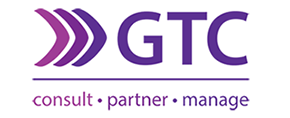Employee Benefits
Sabir Bacus
Senior Benefit Consultant
_______________________________________________________________________________________________________
Beneficiary Nomination Form – The ‘guiding documentation’ upon the death of an employed member
Employees are often confused about which forms to fill in, often believing that the form which they have already completed will be sufficient to cover all benefits.
Let’s unpack the types of membership which employees may hold, discuss the correct Beneficiary Nomination Forms (Form/s) applicable to them, and the legal intricacies associated with each.
Members often assume the Form is a part of the retirement fund. Retirement funds often include associated risk cover like life insurance benefits. These associated life insurance benefits, which, when they become payable, are paid through the retirement fund – are colloquially referred to as approved benefits. A retirement fund Form is applicable to the accumulated assets within the fund, as well as the approved life cover benefits.
Types of membership
Membership often takes the form of belonging to a retirement fund. Retirement funds often include associated risk cover like life insurance benefits. These associated life insurance benefits, which, when they become payable, are paid through the retirement fund – are colloquially referred to as approved benefits. A retirement fund beneficiary nomination form is applicable to the accumulated assets within the fund, as well as the approved life cover benefits.
Alternately, employers may purchase/initiate group life insurance benefits for their employees which, when they become payable, are NOT paid out through any retirement fund. These benefits are colloquially referred to as unapproved benefits. These benefits require their own separate beneficiary nomination form.
It is possible for employers to have both benefits, thus requiring multiple Forms. Understanding some of the legal intricacies of these beneficiary nomination Forms is therefore important.

For participants of a group retirement fund, the often associated group risk benefits are an important component of their fund membership. These insurance products are apportioned in accordance with the beneficiary nominations made by the member, almost always concluded by completing a Form. This document records the name/s of the person/s to whom the financial benefits will be allocated to. This nomination could either be for a death benefit under a retirement fund or a Group Life Assurance (GLA) scheme, or both.
The first important point is to note that if you have both a retirement fund and an unapproved GLA scheme, you will be required to complete a separate Form for each scheme.
These forms become the ‘guiding documentation’ upon the death of a retirement fund member or an insured person under an unapproved GLA scheme.
The rules governing the distribution of death benefits paid from a retirement fund (in respect of a member) and an unapproved GLA scheme (in respect of an insured) differ substantially.
Unapproved benefit – Group Life Assurance (GLA) scheme
A benefit paid from an unapproved GLA scheme is paid directly to the person/s nominated on the Form. If a Form has not been completed, or it is incapable of being executed, such as when the beneficiary cannot be found or has died, the benefit will be paid into the estate of the deceased.
In the absence of a beneficiary nomination form, dependents may be deprived of the pay-out of an insured benefit, a consequence of which could be unintended hardship imposed upon those that the member intended this benefit to support.
Approved benefit – Retirement fund
In contrast to the unapproved GLA scheme benefit, a benefit paid from a retirement fund is regulated by Section 37C of the Pension Funds Act (PFA) – together with prevailing case law.

Section 37C ensures that benefits are provided to persons who were financially dependent upon the member of a retirement fund.
This regulation protects those people who were financially dependent on a member, ensuring that they are provided a measure of financial support.
This section of the PFA imposes legal duties upon the retirement fund’s board of trustees, requiring that they identify the deceased’s dependents and pay the benefit equitably to all dependents.
To achieve this the Board is required to conduct a thorough investigation and consider all relevant facts.
Apart from dependents, Section 37C makes provision for the distribution of benefits to nominees (people that are not dependent upon the member). The benefit may therefore either be allocated to a dependant, a nominee, or both. If there are no dependents and/or nominees – as a last resort – the benefit will be paid into the Guardians Fund administered by the master of the High Court, an unclaimed benefits fund, or the estate of the deceased.
The PFA determines that the benefit does not form part of the deceased’s estate, meaning that no estate duty is payable on the benefit, even if a payment to the estate of the deceased is required.
Section 37C dictates that members do not have the freedom to merely elect to whom they want the benefit paid. The Board of Trustees is ultimately responsible for determining the allocation of benefits and the distribution thereof, in strict adherence with Section 37C
Even though members do not have the freedom of testation, the Board of Trustees will place substantial reliance on the content of a members nomination form. Provided the nomination form elections conform with Section 37C, most trustee boards will look to honour the wishes of the member where possible.
Before completing a nomination form, members should have a legal understanding of who qualifies for benefits:
-
Any person who the member was legally liable to maintain, for example a spouse, ex-spouse and/or children.
- Any person that the member was not legally liable to maintain:
– but they were in fact dependent on the member for maintenance at the time of their death, for example
someone living with the member, or a grandparent dependent on receiving part of their rent payment from
the member, or a sister’s children for whom the member was paying residence fees, etc.
– The spouse of the member (includes permanent life partners, civil union partner, customary marriage/s
performed by religious rites).
– the child of the member (includes children born out of wedlock and adopted children).
- Any person that the member would have been legally liable to maintain had the member not died, for example a fiancé or an unborn child.
- Any person that the member would have been legally liable to maintain had the member not died, for example a fiancé or an unborn child.
These people should all be nominated on the beneficiary form with their financial dependency noted. The Board of Trustees will recognise them as dependants and consider them as possible recipients of part of the benefit due, upon the death of a member.
It is important to note that the Board may elect not to allocate a share of the benefit to every dependant listed (as per the above examples), though the Board will be aware of them, as they determine these dependents ability (or lack thereof) to maintain themselves, and to determine any allocation of benefits for ongoing maintenance requirements.
Benefits allocated to nominees
As mentioned, the Form also include a section for a member to complete the details of nominees, rather than dependents. There are two important factors to bear in mind when allocating benefits to nominees: the nominee must be a person, and the nomination must be in writing. Accordingly a nominee may not be a company or organisation, such as a non-profit organisation like the SPCA.
The Board of Trustees must place a higher priority on the allocation of benefits to financial dependants, ahead of nominees.
The nomination of trusts as beneficiaries
A member may also nominate a trust as a beneficiary. This normally occurs in respect of benefits assigned to minors. However, it is important to note that the Board of Trustees will examine the Trust Deed to ensure that the benefits are protected and will reach the ultimate dependant.

Completing two beneficiary nomination forms
To recap, if a person has an unapproved GLA scheme providing a death benefit, and this person is also a member of a retirement fund, two Forms need to be completed.
Special attention must be paid to unapproved benefits as an insurer will pay the benefit into the deceased’s estate in a case where the Form is absent, or not fully completed.
Retirement fund members must be aware that the Board of Trustees hold the final say regarding the distribution of benefits and that there is a priority allocation of benefits to financial dependants, ahead of other dependants and nominees.
Remember to update your Forms whenever there is a change in your personal circumstances, ensuring that it reflects your current wishes. Your GTC financial advisor is able to assist you with these updates.
To access the GTC beneficiary nomination form click here.






